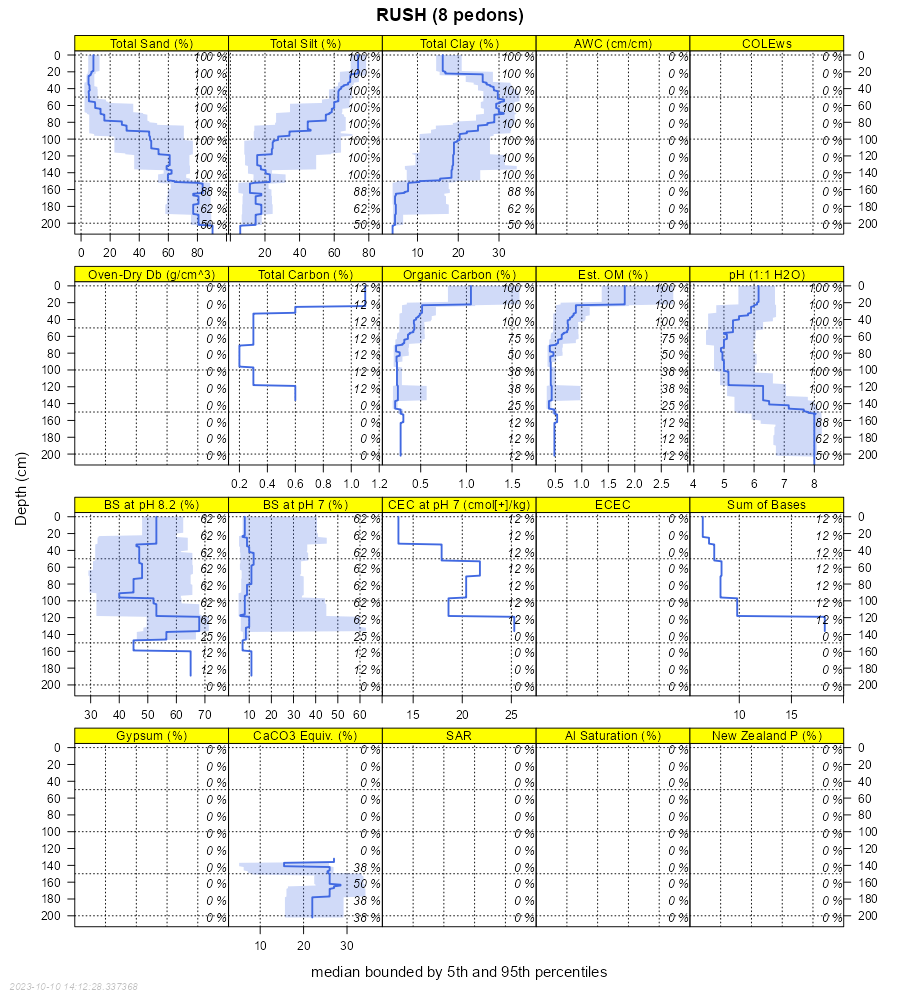| Rush silt loam, 0 to 2 percent slopes | 791A | 254 | 1603126 | 1qt5r | il007 | 2006 | 1:12000 |
Rush silt loam, 2 to 4 percent slopes | 791B | 316 | 183936 | 65df | il037 | 1998 | 1:12000 |
Rush silt loam, 0 to 2 percent slopes | 791A | 262 | 183935 | 65dd | il037 | 1998 | 1:12000 |
Rush silt loam, 2 to 4 percent slopes | 791B | 189 | 183449 | 64wq | il043 | 1998 | 1:12000 |
Rush silt loam, 2 to 4 percent slopes | 791B | 1096 | 198866 | 6ny1 | il089 | 2000 | 1:12000 |
Rush silt loam, 0 to 2 percent slopes | 791A | 465 | 198865 | 6ny0 | il089 | 2000 | 1:12000 |
Rush silt loam, 4 to 6 percent slopes, eroded | 791C2 | 314 | 198867 | 6ny2 | il089 | 2000 | 1:12000 |
Rush silt loam, 0 to 2 percent slopes | 791A | 1291 | 638793 | pfq7 | il093 | 2007 | 1:12000 |
Rush silt loam, 2 to 4 percent slopes | 791B | 542 | 638794 | pfq8 | il093 | 2007 | 1:12000 |
Rush silt loam, 2 to 4 percent slopes | 791B | 500 | 777748 | v39n | il097 | 2003 | 1:12000 |
Rush silt loam, 4 to 6 percent slopes, eroded | 791C2 | 381 | 777750 | v39q | il097 | 2003 | 1:12000 |
Rush silt loam, 0 to 2 percent slopes | 791A | 235 | 804793 | w0g2 | il097 | 2003 | 1:12000 |
Rush silt loam, 2 to 4 percent slopes | 791B | 370 | 1427824 | 1jxrv | il099 | 2006 | 1:12000 |
Rush silt loam, 0 to 2 percent slopes | 791A | 52 | 1427821 | 1jxrr | il099 | 2006 | 1:12000 |
Rush silt loam, 2 to 4 percent slopes | 791B | 3157 | 182777 | 6461 | il111 | 1997 | 1:12000 |
Rush silt loam, 0 to 2 percent slopes | 791A | 1327 | 182776 | 6460 | il111 | 1997 | 1:12000 |
Rush silt loam, 4 to 6 percent slopes, eroded | 791C2 | 747 | 182778 | 6462 | il111 | 1997 | 1:12000 |
Rush silt loam, 2 to 5 percent slopes, eroded | 791B2 | 856 | 780801 | v6h4 | il139 | 1999 | 1:12000 |
Rush silt loam, 0 to 2 percent slopes | 791A | 653 | 780802 | v6h5 | il139 | 1999 | 1:12000 |
Rush silt loam, 2 to 6 percent slopes, eroded | RuB2 | 462 | 164626 | 5j9j | in007 | 1985 | 1:15840 |
Rush silt loam, 0 to 2 percent slopes | RuA | 363 | 164625 | 5j9h | in007 | 1985 | 1:15840 |
Ockley-Rush silt loams, till substrata, 0 to 2 percent slopes | OgA | 7419 | 165214 | 5jxh | in015 | 1987 | 1:15840 |
Rush silt loam, 0 to 2 percent slopes | RwA | 1996 | 165234 | 5jy4 | in015 | 1987 | 1:15840 |
Rush silt loam, 2 to 6 percent slopes | RtB | 10175 | 162453 | 5g1f | in017 | 1979 | 1:15840 |
Rush silt loam, 0 to 2 percent slopes | RtA | 3227 | 162452 | 5g1d | in017 | 1979 | 1:15840 |
Rush silt loam, 0 to 2 percent slopes | RyfA | 2081 | 242489 | 84b7 | in045 | 1999 | 1:12000 |
Rush silt loam, 2 to 6 percent slopes, eroded | RyfB2 | 1247 | 242550 | 84d6 | in045 | 1999 | 1:12000 |
Rush silt loam, 0 to 1 percent slopes | RtA | 3849 | 163059 | 5gnz | in107 | 1984 | 1:15840 |
Rush silt loam, 2 to 6 percent slopes | RtB | 1026 | 163060 | 5gp0 | in107 | 1984 | 1:15840 |
Rush variant silt loam, 0 to 2 percent slopes | RwA | 691 | 163061 | 5gp1 | in107 | 1984 | 1:15840 |
Rush silt loam, 2 to 6 percent slopes, eroded | RtB2 | 707 | 160462 | 5cz6 | in165 | 1977 | 1:20000 |
Rush silt loam, 0 to 2 percent slopes | RtA | 376 | 160461 | 5cz5 | in165 | 1977 | 1:20000 |
Rush silt loam, 0 to 2 percent slopes | RtA | 729 | 163165 | 5gsd | in171 | 1987 | 1:15840 |
Rush silt loam, 2 to 6 percent slopes, eroded | RtB2 | 292 | 163166 | 5gsf | in171 | 1987 | 1:15840 |
Rush silt loam, 0 to 2 percent slopes | RuA | 97 | 1413798 | 1jg5d | oh021 | 1966 | 1:15840 |
Rush silt loam, 0 to 2 percent slopes | RuA | 1756 | 171772 | 5rr1 | oh023 | 1997 | 1:15840 |
Rush silt loam, 0 to 2 percent slopes | RtA | 2036 | 169344 | 5p6q | oh057 | 1974 | 1:15840 |
Rush silt loam, 2 to 6 percent slopes | RtB | 1932 | 169345 | 5p6r | oh057 | 1974 | 1:15840 |
Rush silt loam, 0 to 2 percent slopes | RsA | 975 | 171077 | 5r0m | oh089 | 1986 | 1:15840 |
Rush silt loam, 0 to 3 percent slopes | RuA | 253 | 1595469 | 1qk6r | oh151 | 1967 | 1:15840 |
Rush silt loam, 0 to 3 percent slopes | RuA | 3322 | 536335 | l034 | oh157 | 1981 | 1:15840 |














